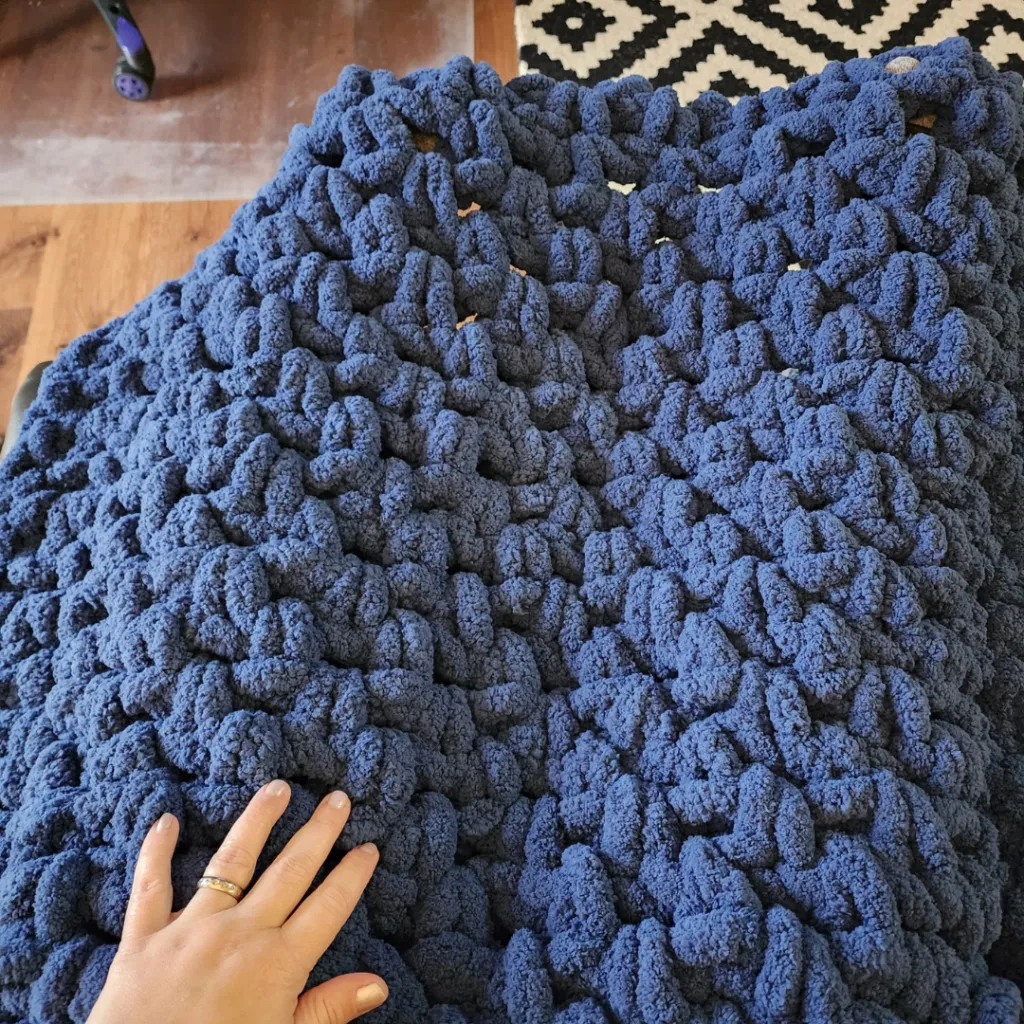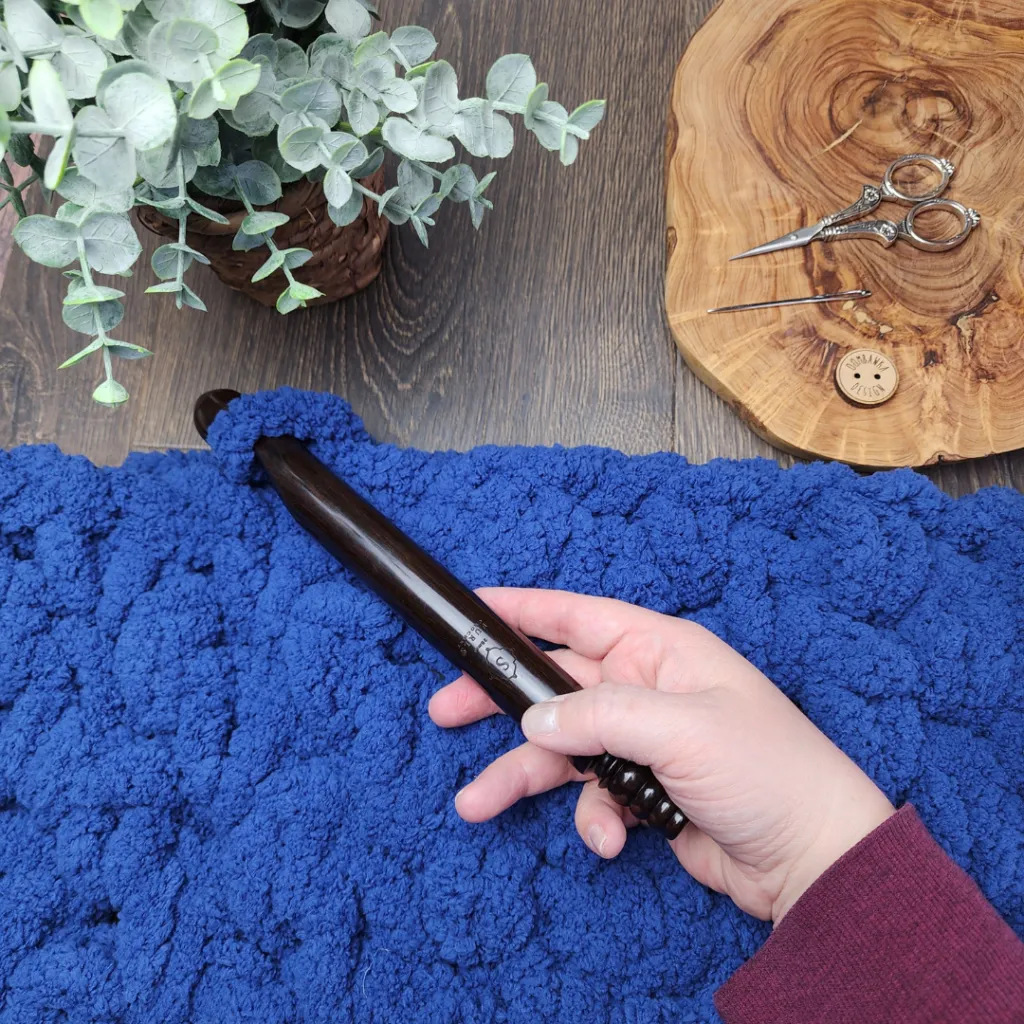Extra Thick Crochet Blanket: Cozy & Chunky Blankets for Cold Nights
Extra Thick Crochet Blanket: Learn How to Crochet a Luxurious Blanket
Extra Thick Crochet Blanket: Learn How to Crochet a Luxurious Blanket
Abbreviations
US Terminology used
- ch – chain
- ch1sp – chain 1 space
- R – row
- Rnd – round
- rem – remaining
- rep – repeat
- sc – single crochet
- sk – skip
- sl st – slip stitch
- st/sts – stitch/stitches
- * to **– Repeat the instructions between the asterisks the number of times indicated. This repeat will contain multiple instructions.
- [] – at the end of the row – the total number of stitches
- () – important notes AND sets of stitches to be worked within one stitch or space
Weaving in ends
Weaving in the ends of your crochet project is a crucial step to ensure that your work remains secure and that the tails of yarn do not come undone. Here is a detailed guide on how to weave in the ends effectively:
Firstly, identify the wrong side of your crochet project. This is the side where you will be weaving in the ends, ensuring that the front of the stitches on the right side remains undisturbed and neat. Once you have determined the wrong side, thread your yarn onto a needle, which can be either straight or bent-tipped.
Now, let's begin the process of weaving:
- Find the first stitch on the wrong side of your crochet and insert your needle into it. Then, continue by inserting the needle into the second stitch. The type of stitch you are using will determine which loop you should use. For example, if you are using US half double crochet stitches, the extra loops are perfect for securing the ends.
- Gently but firmly pull your yarn through the stitches. It is important not to pull too tightly, as it will cause the crochet to pucker and affect the tension of the stitches.
- Insert the needle back into the last stitch and then into the next few stitches. This creates a secure loop and ensures that the end is well-hidden. The number of stitches you go through can vary depending on the project and the tightness of your stitches. If your stitches are loose or your crochet fabric is lacy, you may want to loop through only one stitch at a time for a neater finish.
- Pull the yarn through the stitches again, ensuring that it is taut but not too tight. You can repeat this process as many times as needed along the row, and you can even change directions to make it extra secure. Just be mindful not to pull too tightly, as it can alter the height and width of your stitches.
- Finally, when you are satisfied that the end is securely woven in, you can break the yarn. Be careful not to snip too close to the stitches. A helpful tip is to pull the yarn slightly and then snip it away from the stitch, allowing the yarn to naturally pop back under the stitch after cutting.
By following these steps, you can ensure that the ends of your Bernat blanket extra thick crochet pattern are neatly and securely woven in, maintaining the integrity and appearance of your project.
Crafting a Tetris Blanket: Crochet with a Twist
You may want to see also
Edging Instructions
Rnd 1: Ch 1, TURN, 1 sc in each st and ch1sp across to the corner, ch 1, rotate your work to continue down the side edge. 1 sc in each row end to the corner, ch 1, rotate your work to continue along the foundation edge. 1 sc in each st and ch1sp across to the corner, ch 1, rotate your work and continue up the side edge. 1 sc in each row end to the corner, ch 1 and sl st to the first st to join.
Proceed to finishing instructions.
Best yarn for a super thick crochet blanket
When it comes to creating a super-thick crochet blanket, the type of yarn you choose is crucial. Here are some factors to consider when selecting the best yarn for your project:
Yarn Weight:
Fiber Content:
The fiber content of the yarn refers to what it is made of. Natural fibers like wool are great for keeping warm, but synthetic fibers like acrylic are more versatile and suitable for those with allergies. Cotton yarn is perfect for spring and summer projects.
Washability:
Creating a blanket requires a large amount of yarn, so cost is an important factor. Animal fibers tend to be more expensive, and the thicker the yarn, the more you will need. Calculate the required amount of yarn for your project to estimate the total cost.
Recommended Yarns:
- Lion Brand Wool-Ease Thick & Quick: A super bulky weight yarn that is a blend of acrylic and wool, perfect for keeping warm.
- Bernat Blanket Yarn: A versatile super bulky weight yarn available in different lines, such as Bernat Baby Blanket Yarn for baby blankets.
- Lion Brand Hometown: Another super bulky weight yarn that is a wool-free option for those with allergies.
- Red Heart Soft Essentials: A bulky weight yarn that is one of the best five-weight yarns for making blankets.
- Lion Brand Cover Story: A super bulky weight yarn that offers excellent yardage, requiring only one skein to make a blanket.
The Cozy Crochet Blanket by Alison Russell
You may want to see also



Tegs:
Search
Recent Posts
-
Organize Your Creativity: Extra Large Rolling Craft Bags for Your Needs
May 4 2025
-
Knitting Large Projects: Choosing the Right Extra Long Knitting Needles for Blankets
May 18 2025
-
Extra Large Macrame Plant Hanger DIY: Create a Stunning Statement Piece
Jul 4 2025
-
Sewing Thick Fabrics with Ease: Choosing the Right Sewing Machine
Apr 29 2025
Subscribe to Updates
Get the latest posts and fashion insights directly in your inbox.